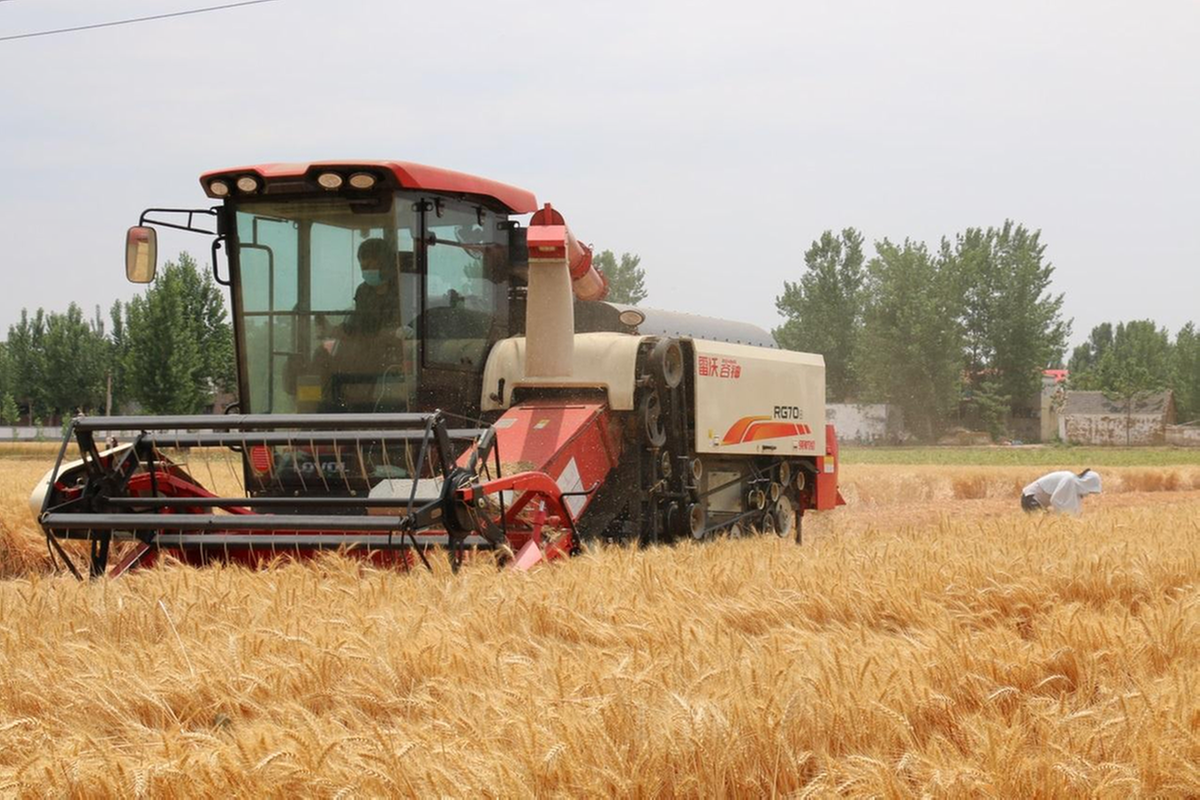
Farmers harvest wheat grown from Jimai 44 seeds in Tengzhou, a county-level city in Zaozhuang, Shandong province. (Photo: chinadaily.com.cn)
The autumn grain harvest accounts for about 75 percent of the annual grain production in China, and August and September are always the key months for the autumn harvest. The high temperatures in the middle and lower reaches of the Yangtze River and South China are posing a serious challenge to the autumn grain yield.
The drought has affected about 821,333 hectares of farmland in six provinces and municipalities.
Local governments in the affected areas need to act decisively and promptly allocate the funds provided by the central government to support the construction of drought-resistant emergency water source projects and strengthen their drought-resistant support capacity.
The Ministry of Finance, together with the Ministry of Agriculture and Rural Affairs, has issued 300 million yuan ($44.01 million) in disaster relief funds to subsidize the purchase of agricultural materials and the repair of post-disaster agricultural production facilities in disaster-stricken areas in 13 provincial-level regions.
Agricultural departments should strengthen communication and consultation with the meteorological, emergency and water conservancy departments, and keep abreast of weather and soil moisture changes. They should make full use of the latest smart agricultural equipment and the internet-of-things technology to strengthen the monitoring and analysis of the soil and crop conditions.
Specifically, it is important to ensure field irrigation, improve field microclimate, and prevent the superposed effects of the drought and high temperatures.
The Ministry of Agriculture and Rural Affairs has advised the use of drought-resistant and water-retaining agent in areas lacking irrigation and watering conditions. For the more severely affected areas, localities should harvest early and develop regenerated rice or late-autumn crops.
As the high temperatures are conducive to pests and diseases, government departments, agricultural research institutes, colleges and universities should organize expert teams to draw up targeted crop defense plans. And farmers must be vigilant, focusing on the prevention and control of rice leafrollers and planthoppers, as well as rice blast and rice smut.


